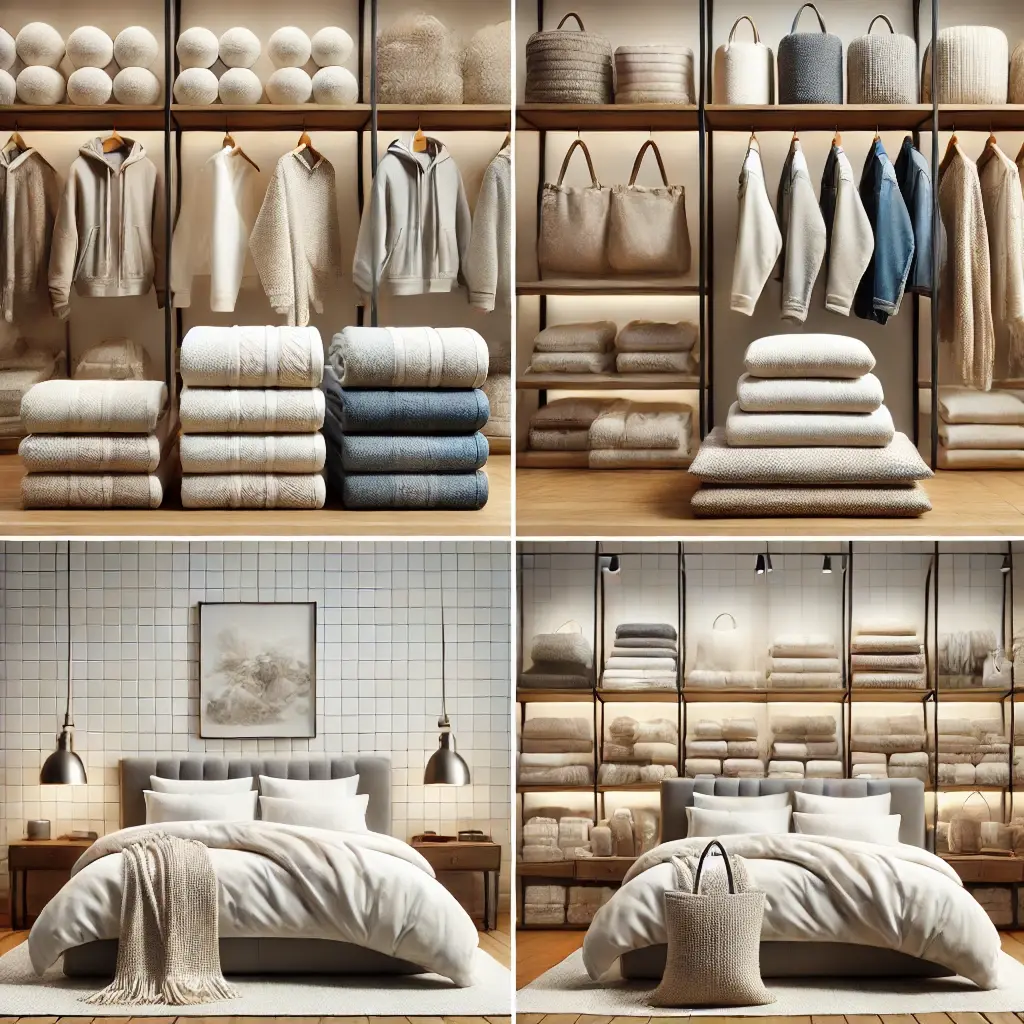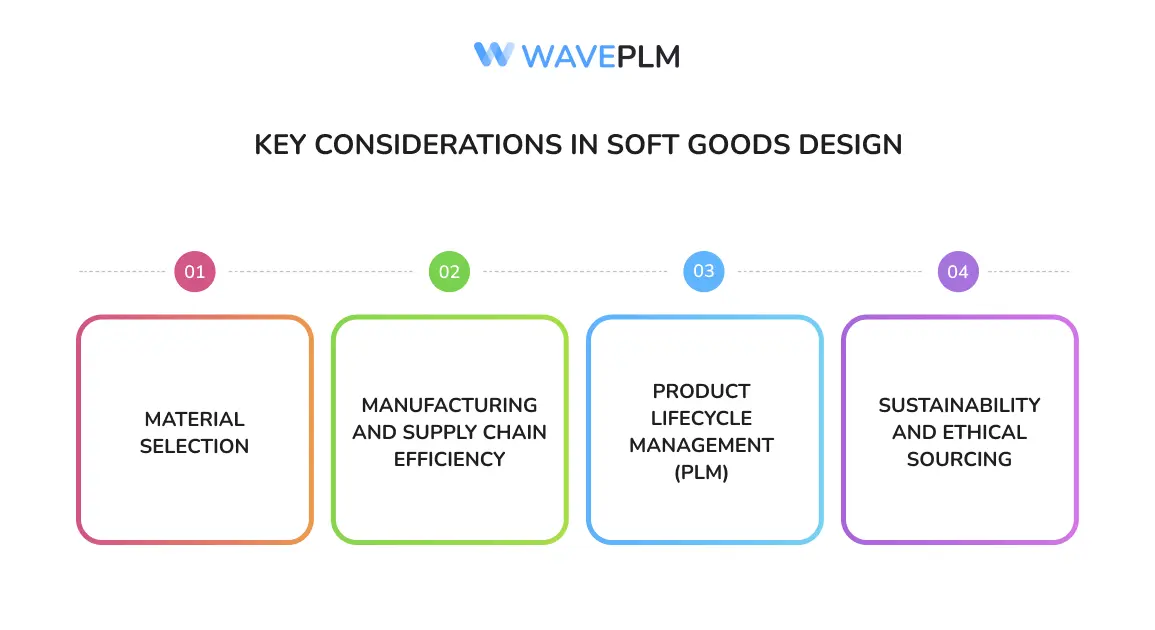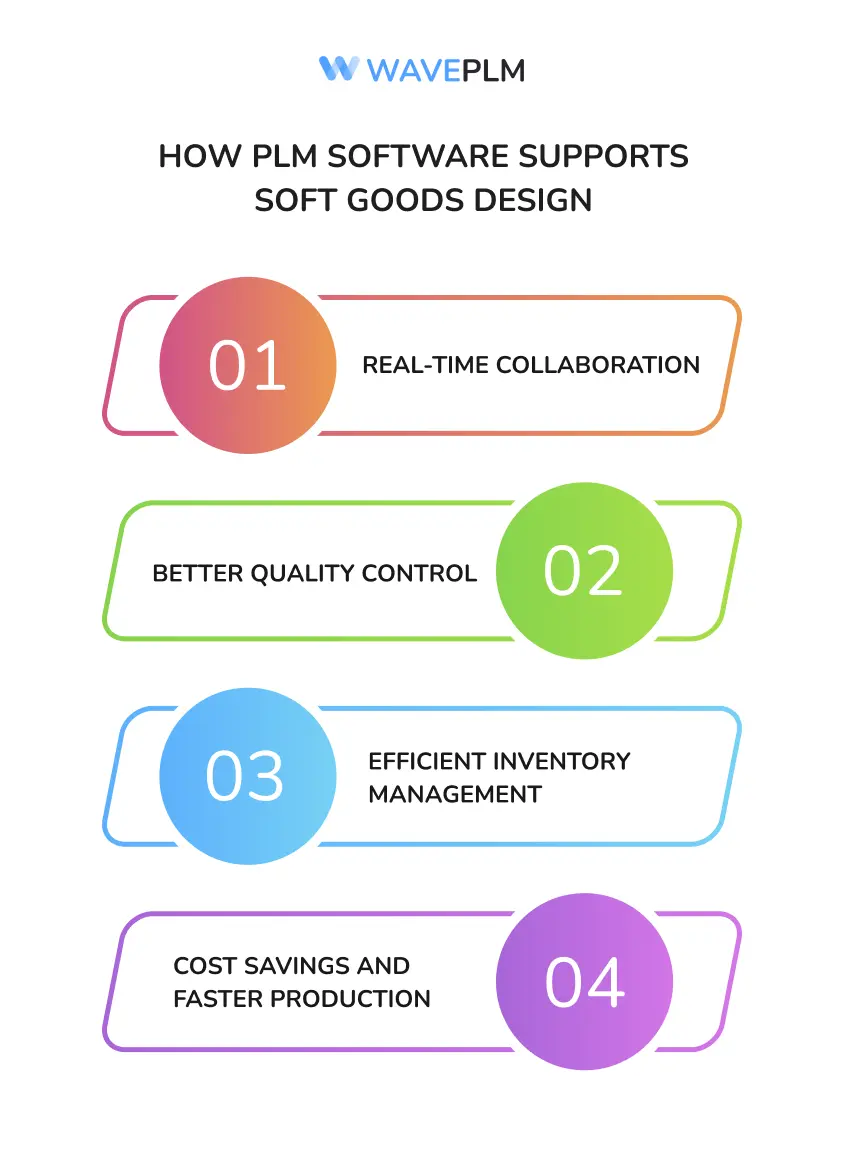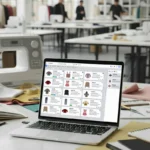
Soft goods play a key role in retail. They include clothing, bedding, and accessories. But what are soft goods in retail, and how do they differ from hard goods? This guide explains the differences and explores how good design and PLM software help brands manage product development, quality control, and inventory management efficiently.
What Are Soft Goods in Retail?
Soft goods include products made from fabric, leather, and other flexible materials. These products include apparel, towels, bags, and personal items like gloves and scarves. Unlike hard goods, which include furniture, electronics, and appliances, soft furnishings require careful handling and storage to prevent damage and maintain quality.
Retailers need to manage clothing and accessories differently than hard goods. Trends change fast, and fabrics wear out. Proper inventory management ensures retailers have the right stock at the right time while avoiding waste.
Soft goods include textiles, soft furnishings, and accessories, all of which contribute to the retail sector’s dynamic nature. Efficient management of these fabric products relies on advanced inventory tracking, real-time updates, and collaboration between product designers and supply chain managers.
Hard Goods vs. Soft Goods: The Key Differences
Retailers classify products into hardlines and softlines. Hardlines, or hard goods, include durable items like appliances and sporting equipment. Softlines, or soft goods, include fashion, textiles, and accessories.
Knowing this difference helps retailers organize shelf space and track inventory. Managing product categories effectively reduces costs and ensures efficient management of supply chains.
Since hard goods last longer, they follow different production cycles. Soft goods must respond to trends and seasonal demand, so retailers need a flexible approach to managing products. Real-time product data supports quick adjustments to demand shifts. Understanding these changes allows retailers to reduce costs while maintaining customer satisfaction.
Example: Hard Goods vs. Soft Goods in Golf
The difference between hard and soft goods also applies to golf. Hard goods include clubs, balls, and carts. Soft goods include apparel, gloves, and golf bags. Managing both types of products requires different inventory strategies. Hard goods vs. soft goods golf products require different quality control and data management approaches to ensure retailers optimize their product offerings.
Soft goods in golf must be lightweight, durable, and comfortable. Brands use fashion PLM software to track materials, improve product design, and ensure quality control. Real-time product data helps businesses respond quickly to demand changes, making managing product categories easier. The combination of data-driven insights and efficient management ensures retailers can meet shifting consumer expectations without excess inventory.
What Does a Soft Goods Designer Do?
A soft goods designer creates comfortable, durable, and stylish textile products. They choose fabrics, colors, and construction methods to balance aesthetics, function, and cost. Unlike hard goods designers, who work with metals and plastics, designers focus on fabrics, stitching, and comfort.
Good design improves product appeal and durability. Designers must understand material properties, breathability, and sustainability to create high-quality products. They also work with product developers to ensure designs meet customer needs while staying cost-effective. A well-planned product design helps retailers reduce costs and manage product categories efficiently.
Key Considerations in Soft Goods Design
1. Material Selection
Soft goods must be comfortable and durable. Designers choose materials based on use, such as moisture-wicking fabrics for sportswear or high-thread-count cotton for luxury bedding. Good material choices improve product performance and extend product life.
Sustainability is also important. Brands now prefer organic cotton, recycled polyester, and biodegradable materials to reduce environmental impact. Managing product materials efficiently with apparel PLM allows designers to source high-quality materials while ensuring ethical production standards. Ethical sourcing is becoming a priority in the retail industry, influencing both product design and marketing strategies.
2. Manufacturing and Supply Chain Efficiency
Such production involves sourcing materials, manufacturing, and distribution. Managing the supply chain efficiently ensures products reach stores on time. Real-time data tracking helps brands monitor production progress and avoid delays.
A well-managed supply chain prevents overstocking and understocking. PLM software helps brands track materials, predict demand, and optimize workflow. Managing product design with PLM ensures seamless collaboration between teams. Integrated systems allow for greater accuracy, improving cost efficiency and reducing waste.
3. Product Lifecycle Management (PLM)
Apparel PLM software acts as a source of truth for product data. It allows designers, developers, and manufacturers to collaborate efficiently. This reduces errors, improves communication, and speeds up production.
PLM software like Wave PLM also improves quality control. Brands can track test results, material performance, and compliance data to ensure consistency and reliability. Efficient management of design and production cycles enhances retail success. With PLM tools, retailers can adjust product designs in real time, responding quickly to consumer feedback and market changes.
4. Sustainability and Ethical Sourcing
Consumers want sustainable products. Ethical sourcing of organic cotton, recycled fabrics, and biodegradable materials is now a priority. Brands use PLM systems for apparel to track sustainability efforts and ensure compliance with environmental regulations.
Sustainable production includes reducing water and energy consumption, using ethical labor practices, and minimizing packaging waste. PLM software helps brands monitor these goals and improve transparency. Quality control efforts in soft goods design also ensure that sustainable choices align with customer expectations. As sustainability becomes a key differentiator, retailers who invest in eco-friendly soft goods gain a competitive edge.

How PLM Software Supports Soft Goods Design
PLM tools helps brands manage product design, production, and inventory. It improves efficiency and ensures high-quality products. Here’s how it benefits soft goods retailers:
1. Real-Time Collaboration
Fabric products design involves many teams, from designers and developers to suppliers and retailers. PLM software enables real-time updates, ensuring all teams work with the latest product data. Efficient management of design and development stages ensures faster time-to-market. A strong collaboration between product designers and manufacturers helps maintain consistency and innovation.
2. Better Quality Control
Soft goods need durability testing for colorfastness, shrinkage, and wear resistance. PLM software tracks testing data, allowing brands to identify issues and make improvements before production. Managing product durability with apparel PLM reduces defects and enhances customer satisfaction. Better quality control reduces returns, improving profitability and brand reputation.
3. Efficient Inventory Management
Seasonal trends drive soft goods demand. PLM software helps retailers predict demand, manage shelf space, and avoid stockouts. It also ensures that popular products stay in stock without excess inventory. Good inventory management reduces costs and helps brands remain competitive. By utilizing data management and predictive analytics, brands can optimize inventory planning.
4. Cost Savings and Faster Production
Automating workflows with PLM software reduces errors, material waste, and production delays. Brands can launch products faster while keeping costs under control. Real-time data also helps companies identify cost-saving opportunities within their supply chain.
PLM system allows retailers to reduce costs while managing product categories efficiently. Efficient cost management increases profit margins and enhances market positioning.

Conclusion
Soft goods in retail differ from hard goods in durability, production, and inventory needs. Understanding these differences helps brands manage product design, supply chains, and quality control effectively.
Clothing and accessories designers focus on material selection, sustainability, and efficient production. Apparel PLM helps them track product data, improve collaboration, and optimize workflows. As trends evolve, technology ensures soft goods remain high-quality, cost-effective, and appealing to consumers.
Retailers must adapt to changing market demands while keeping costs low. With Wave PLM software as a source of truth, brands can streamline production, improve inventory management, and maintain a competitive edge in the industry. Managing product categories, ensuring quality control, and optimizing design processes all contribute to successful retail soft goods strategies.





Leave a Reply